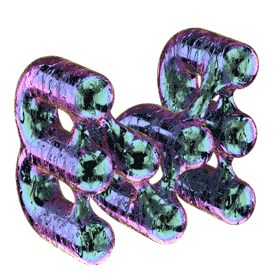





























EYE GRABBING
The Berlin Model Gallery is opening its first exhibition in 2025, marking the beginning of a year-long cycle of exhibitions connecting female artists of different generations.The first artist from the oldest generation of living female artists will be Adéla Matasová (1940)
The need to grasp and explore through touch is one of the primary human instincts. We are not even capable of sharp and colourful vision, when we grasp the world around us with the tips of our fingers and the hollows of our palms. Our hands grip a variety of tools, coordinated with our examining eyes. The need to understand by touch stays with us, and is refined in coordination with the other senses. The touch of the human hand can symbolize both the pursuit of connection and the violation of the autonomy of others.
The insatiable, ever-growing desire to understand and know, to reach into territories that should remain remote to humans, that cause us to spiral into a domination of all that we can observe or touch… We subjugate, persisting in the presumptuous illusion of innocent appropriation of everything other-than-human that we would prefer to preserve in hermetically sealed worlds for microscopic examination.
Gradually, the land has stopped being enough for us. Man, the self-proclaimed pinnacle of evolution, can expand into the sea, or so we think in our arrogance – the fascination with this environment may be stronger than the instinct for self-preservation.
The deep, sticky, dense waters are an endless source of curiosity and memories of the original home we inhabited as microorganisms. There is something within each of us that connects us to all life, through the invisible threads of memory and interspecies generational patterns that transcend our individual boundaries. The protoplasm of cells bears the imprint of this genetic information. By observing and studying other species, it is as if we are trying to learn something about ourselves. We study the curious creatures, but the true workings of biological processes underwater remain a holy grail for which presiding memory and knowledge are inadequate.
The extensions of our bodies, the tools of exploration, are mirrored in this world and point to our prehistoric past. Our ears resemble the curl of a seashell, our fingers transmit patterns encoded in evolutionary connections. Octopus tentacles wrap around their prey, mapping the environment, opening corked vessels. What remains of the stalactites of sea coral and their hair-like shoots flutter in the watery eddies. A shark egg bursts and expands out of the safety of its shell.
Through the works of the exhibiting artists, Eye Grabbing outlines several perspectives through which we can view this network of relations: from a critical point of view that comments on the mortification of the examined, to one that outlines altered ways of relating to our near and distant environment. Material traces are at times an appropriation of the scientific and at times a human surrogate that mimics organic structures. The exhibition thus becomes a materially dynamic narrative, stretching temporality into expanding margins in which our prehistory becomes the material we seek to model, interpret and situate within our human narrative.



